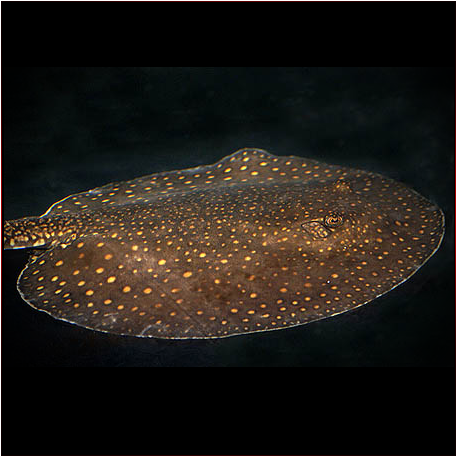More info
Datasheet
| Minimum Tank Size | 1700 litres / 449.09 US gallons |
| Maximum Size | 61.0cm / 24.02inches |
| Temperature | 24°C / 75.20°F - 28°C / 82.40°F |
| Hardness | 5-12ºdH |
| pH | 6.0-7.5 |
General Description
The Potamotrygon Castexi, also known as Otorongo Ray, P25-36, P54, is a unique and fascinating species of freshwater stingrays found in various river basins in Peru, Bolivia, Brazil, and Argentina. These rays are distinguished by their predatory nature and stunning polychromatic color patterns, with different variants recognized by distinct markings on their disc.
Aquarium Setup
When setting up an aquarium for Potamotrygon Castexi, it is essential to prioritize spaciousness, minimal decor, and efficient filtration. A sandy substrate or river sand mimics their natural habitat, though some opt for bare-bottom tanks for easier maintenance. Secure heavy decor like bogwood or rocks to prevent displacement. Ample swimming space, dim lighting, and plants like Java fern or Anubias that can be attached to decor are suitable additions. A robust biological filtration system, such as a sump or external canister filter, is crucial to manage the high waste production of these active predators. Maintaining stable water conditions through regular water changes and keeping a tightly fitting tank cover are vital aspects of their tank setup.
Behaviour
Potamotrygon Castexi is known to be apex predators in their ecosystems, preferring a serene environment in captivity. They do not thrive when kept with aggressive tankmates and are best suited to cohabitate with peaceful, larger companions like specific cichlids, characins, cyprinids, and catfish species. Some enthusiasts also house them with species like arowana in spacious tanks, creating visually striking combinations. Rays can become tame and may recognize their owners, often begging for food, but caution is necessary due to their venomous sting located on the caudal fin.
Feeding and Diet
Wild Potamotrygon Castexi primarily feed on other fish, invertebrates, worms, and crustaceans. In captivity, they require a meaty diet fed at least twice daily, consisting of live or frozen options like bloodworms, mussels, prawns, and squid. Avoid feeding them mammal meats or live feeder fish, as these can lead to health issues. It is essential to ensure they start feeding promptly upon introduction, as they are high metabolic rate fish that need regular nourishment to thrive.
Reproduction & Dimorphism
These rays exhibit matrotrophic viviparity, with females giving birth to live and fully formed pups after a gestation period of 3-12 months. Successful breeding in captivity requires compatible pairs, suitable tank conditions, and patience as it can take several years for them to reach sexual maturity. Males possess visible claspers on their pelvic fins for insemination, making sexual differentiation easy.
Habitat and Distribution
Potamotrygon Castexi inhabits a variety of freshwater environments like sand banks, major river shallows, and slow-moving tributaries in South America. Their distribution spans river basins in Peru, Bolivia, Brazil, and Argentina, including regions like Rio Beni, Rio Paraná, and Rio Paraguay. These rays can also venture into flooded forests during the wet season and adapt to terrestrial lakes and ponds post-flooding.

